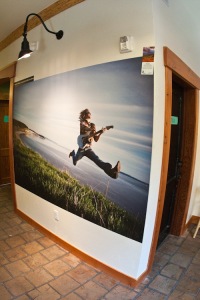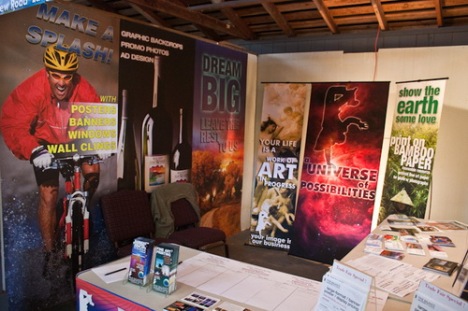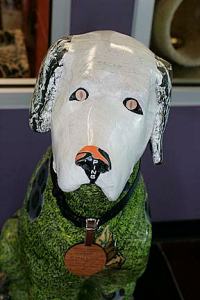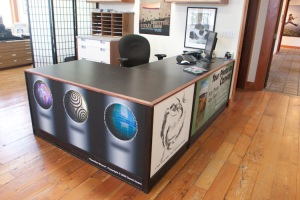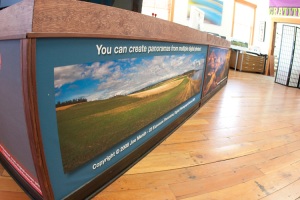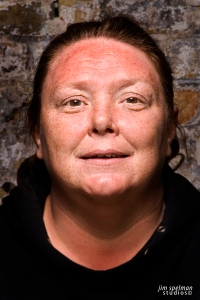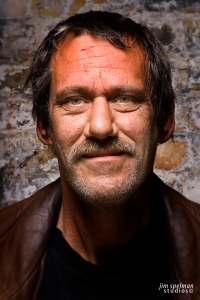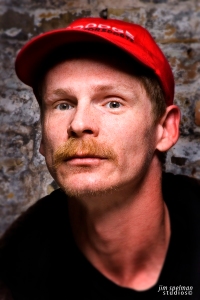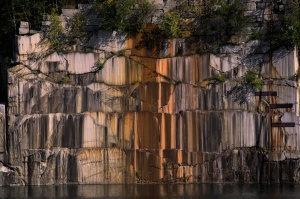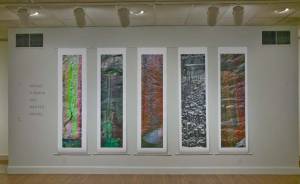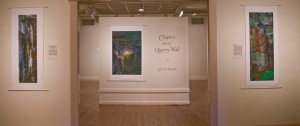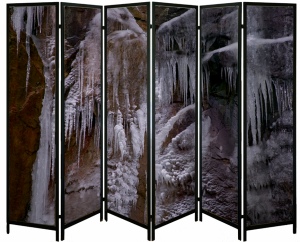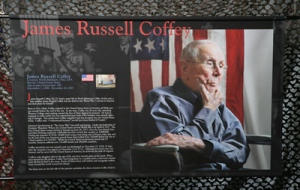When you exhibit in a basic 10 x 10 ft. booth at a trade show, you only have about 3 to 5 seconds to grab the attention of each attendee strolling the aisles. That’s why it’s better to use a big, eye-catching visual in your booth graphics than multiple lines of small text.
Because trade-show graphics rely so heavily on high-res, high-quality visuals, they can represent a real opportunity for professional photographers who know how to print big.

Photographer Clark Marten created these multi-panel and single-panel displays with LexJet’s I-Banner Spring Back Banner Stands and Water-Resistant Satin Cloth (www.clarkmarten.com)
If you already have a wide-format printer in your studio, we can teach you how to use it with LexJet materials and portable banner stands to create free-standing displays for bridal fairs, sports events, seminars, and other gatherings. You can also produce ready-to-go displays and sell them to business clients who hire you to shoot their product images or to seniors, athletes, or executives who want attention-getting ways to display their portraits.
LexJet knows a lot about trade-show graphics because that’s how we got our start. In 1994, LexJet started selling new combinations of materials that could help exhibit producers fabricate more durable inkjet-printed trade-show graphics and exhibits. We continue to sell dozens of different materials and display systems for producing multiple types and sizes of graphics for trade shows, stores, museums, and events.
Whether you want a low-cost portable system for occasional use or a display rugged enough to endure a multi-stop event tour, we can help you choose the most cost-effective combination of print materials and display systems.
As for designing the graphics themselves, check out this great article entitled 10 Small-Booth Graphic Mistakes on Exhibitor Online.
The article starts out by emphasizing that the graphics “must clearly communicate who you are, what you’re selling, and what benefits your company’s product or services can offer.” Then, the article’s author Linda Armstrong explains how to avoid the 10 most common mistakes people make when creating graphics for 10 x 10 ft. booths. Here are the most common mistakes:
- Too Many Words
- The Wrong Words
- Competing Colors
- Artsy Fonts
- Tiny Type
- Text Below Eye Level
- Too Many Images
- Poor Image Quality
- Bad Lighting
- Nicks and Dings (Damaged Graphics)

Fine Balance Imaging Studios displays banners stands both in their studio (above) and trade-show booth (below). (www.fbistudios.com)
Exhibit designers quoted in the article recommend using one large main image to fill the display instead of a smattering of small images. And, they say the graphic will be more eye-catching if the image is cropped to eliminate distracting details.
The experts also advise graphic buyers not to use low-quality images that don’t have sufficient resolution to be enlarged without becoming blurry or grainy.
Many LexJet customers who are converting their images into displays like using Water-Resistant Satin Cloth with an economical I-Banner spring-back banner stand. The fabric graphics are lightweight, don’t require lamination, and can easily be shipped and stored. But LexJet offers dozens of options, including a retractable banner stand made of environmentally friendly bamboo and tabletop systems for set-up at smaller shows.
So call a LexJet account specialist at 800-453-9538 whenever you’re ready to get started. We’ll be happy to tell you more about how to convert your images into attractive, portable displays.
Filed under: Photography Business, Uncategorized | Tagged: banner stands, iBanner Stands, inkjet-printable fabric, marketing photography, Photography Business, portable displays, trade-show graphics, Water-Resistant Satin Cloth | Leave a comment »



